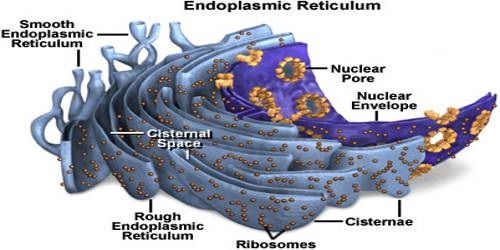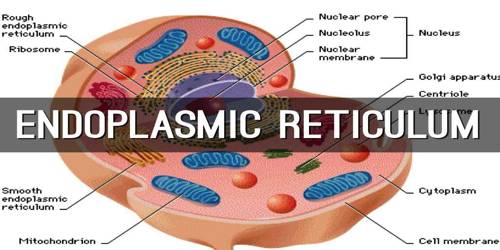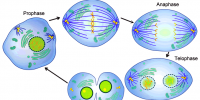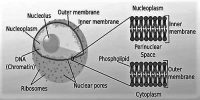Endoplasmic reticulum (ER)
In a grown-up cell, a system is found in the cytoplasm. This is called endoplasmic reticulum. It is defined as a series of folded membranes in the cells which are associated with protein synthesis, storage and the movement of cellular materials. Principally, the ER is the transportation system of the eukaryotic cell, and its proteins are contained within it until they are needed to move. It plays a key role in the production, processing, and transport of proteins and lipids. The endoplasmic reticulum is of two types – smooth and rough. ER having ribosome on its body is called rough endoplasmic reticulum.
Structure: They are bounded by a double-layered semipermiable membrane. Usually, they are branched but might happen in parallel. They are continuous with the nuclear membrane and the cell membrane. Chemically the membrane is made of lipoprotein. Small granular bodies may be present on it.

Function: They form the skeleton of protoplasm. Protein synthesis occurs in rough endoplasmic reticulum. Lipids, an alternative opinion, dissimilar hormones, glycogens etc. are synthesized in the smooth endoplasmic reticulum. They play the function of the internal carrier of lipid and protein.
- It is mostly liable for the transportation of proteins and other carbohydrates to another organelle, which includes lysosomes, Golgi apparatus, plasma membrane, etc.
- They play a critical function in the arrangement of the skeletal framework.
- They supply the increased surface area for cellular reactions.
- They assist in the arrangement of nuclear membrane during cell division.













